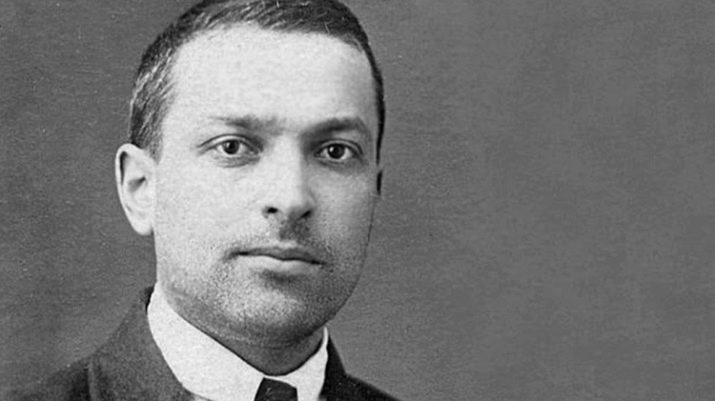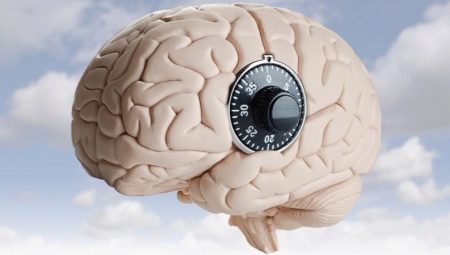How to live by concepts? Not that they were spread on the territory of our country in the dashing 90s by criminal and semi-criminal elements, but by the fact that they began to form in the heads of people of the whole planet at an earlier stage of evolution. It's about conceptual thinking.
Features
The term "conceptual thinking" in psychology appeared not so long ago. It was introduced by a Soviet scientist Leo Semenovich Vygotsky. From 1924 to 1934, he studied how consciousness affects a person’s way of thinking. And he came to the following conclusion - how a person thinks depends on the following factors:
- the ability to see the true essence of the phenomenon,
- ability to find the cause of what is happening,
- ability to foresee the consequences
- information handling skills,
- the ability to systematize it,
- ability to build a complete picture of what is happening.
Only those who have this form of thinking are able to competently understand any situation. The rest, and according to some data about 80% of them, think that they are right only because they think so. They explain any mistake by outside interference.

He is not able to predict the consequences of his actions, as a result of which they often make mistakes.
Conceptual thinking - non-innate ability. It begins to appear in the child at the age of 6-7 years. It was then that his ability to not only gain knowledge, but also to give them his own assessment manifested. Theoretical knowledge, if conceptual thinking is not applied, will remain only dry, often unnecessary, and therefore quickly forgotten information. It is believed that conceptual thinking first formed in a person when a word appeared.It is it that makes it possible to imagine what is impossible to “touch”. Happiness, conscience, resentment, anger - these are just words that everyone perceives in his own way. How this happens depends a lot on what kind of education a citizen received, what literature he studied, and what situations he personally encountered.
To determine how developed conceptual thinking, you can use a much simpler way. Choose from the set of the following words superfluous. "Bullfinch, sparrow, bird, canary, ostrich, penguin, crow." Most of those who pass this test, choose a penguin or ostrich, arguing that their size and dissimilarity to other birds. Although the correct answer is "bird." It is this word that is superfluous in this list. It only unites - all the others, others are its species.
Another question from another area. How much will 2 three-ruble buns cost if a kilogram of flour costs 20 rubles? Surprisingly, some are starting to look for a difficult solution that actually lies on the surface. After all, no matter how much raw materials cost, two rolls of 3 rubles each will cost 6. Have you passed the test? Now let's try to understand whether it is worth it to rejoice and be upset by the result.

Advantages and disadvantages
The ability to clearly state one’s thoughts is one of the main distinguishing features of a person with conceptual thinking. He clearly understands the essence of each spoken word.. For him, this is a tool for expressing his own knowledge and opinions. At the same time, a person who does not have conceptual thinking may have much more words in stock, but use them “for other purposes”. Their thoughts are confused during the speech, they can hardly find the right words. For them, at first there was a word, while for the first, thought first appeared.
But, as you know, we are all not without flaws. So are people with conceptual thinking. They are not able to respond quickly and act in stressful situations.
They need to think everything over, build a logical chain of events, analyze what has happened, and understand the possible consequences. And this is more a minus than a plus.

What is the difference from imaginative thinking?
Do not confuse conceptual thinking and figurative. They differ in a number of ways. The first gives a generalized description of what is happening, which appears due to the experience a person has received in different segments of his life. The second grabs some images from memory. The picture is recreated with the help of imagination and therefore does not always have an obvious connection with reality.
There are common points - and that, and another type of thinking is based on their own experience, knowledge and skills. However, conceptual thinking turns off fantasy, it is based only on reliable facts, accurate data, analysis of specific numbers and phenomena.. Conceptual thinking, as it were, supplements the figurative, corrects it, takes it into a more constructive and logical channel.

Principles and Tools
A person with conceptual thinking is always based on the principle of interconnection. He does not consider individual moments one at a time. It is important for him to get to the bottom of the matter. Therefore, such concepts are inextricable for him:
- the reason for what happened and what it will lead to;
- purpose and means that will help in its achievement;
- condition, proof (justification), conclusion.
To put all these concepts in his head, the thinker conceptually uses the following set of mental tools.
- Creating a system. Several questions and answers do not exist separately from each other, but are combined into a single whole.
- Ability to abstract. He can “discard” certain individual characteristics of a phenomenon, object or creature under certain circumstances and consider what is happening without taking into account some of its signs.
- Synthesis. Several individual signs of the same phenomenon are skillfully combined into a single whole and thus give a complete picture.
- Ability to analyze the situation. Despite the fact that it is common for a person with conceptual thinking to use synthesis, he is at the same time able to separate the grains from the chaff, to isolate the signs necessary at a certain moment.
- Comparative analysis. With its help, differences in phenomena or events are compiled. Thus, something common is formed that could lead to what is happening.
- Transition from private to general. Collection of several different phenomena in a general category. Using all these tools, we get the most complete picture of what is happening. With this approach to solving the problem, the chance of error is minimal.
While a person who does not have conceptual thinking goes ahead. His stubbornness leads him to the goal through trial and error. Often this leads to the fact that he simply "breaks his head", and not getting to the bottom of the truth.

Application in various fields
Conceptual thinking is more characteristic of those who study the exact or natural sciences. However, one does not need to think that it can be applied only in certain areas of life. Such a way of thinking can be useful both at home and at work.
In household
Lack of conceptual thinking can lead to confusion. Lack of knowledge in a specific area does not allow a person to become a full member of society. Some people are so stubborn that they do not want to develop. Therefore, a conversation with them most often boils down to the well-known: "I am always right, if I am wrong, see point one." Their emotions and conclusions come from the heart rather than from the head. As a result, even while watching a football match with friends, they have a misunderstanding. Deprived of conceptual thinking does not own specific terms in this area. And from the TV, such words as the winner, winner, favorite, and applicant are constantly heard. A person without conceptual thinking does not want to think about it. He wants to understand everything on an intuitive level.
His opponent is ready to go headlong into the solution of any issue. In fairness, it should be noted that he does this even when it is not particularly necessary. Therefore, communication with such people can not be called easy. For example, before answering the question of how to get to the library, they will conduct a whole study. By taxi - quickly, but expensively, by public transport longer, but cheaper, and the analysis of which bus or trolleybus to use will also be present, on foot even longer, but free of charge.
Until an optimal solution is found, a person in conceptual thinking will not go anywhere. Emotional decisions are not about him.

In business
Here conceptual thinking is the key to success. Whatever you do - economics, programming, law, agriculture or industrial production, it’s important to define concepts precisely everywhere. Differences in the conditions of the task, contract, contract will inevitably lead to collapse. therefore acting in business solely at the call of the heart is contraindicated. It is necessary to include conceptual thinking in which there is no room for error.
In scientific
The development of this industry is also impossible without the use of conceptual thinking. Any error in the study of the source data can lead to failure. Take, for example, the economic industry and the word “market” often used in it. Its meaning can be interpreted in a variety of ways. The world market with its rules and the central one in a single city, existing according to its own laws, are completely different things. therefore When solving questions on this topic, it is important to determine the exact meaning of the term. Conceptual thinking is more useful than ever.

Development tips
Many experts, and very reasonably believe that the level of conceptual thinking has recently fallen sharply. And this is especially noticeable in youth circles. The current educational standards are to blame. In particular, the introduction of the exam. This method of certification of graduates has led to the fact that they accumulate only superficial knowledge and only in those subjects that are going to take. They are not interested in causal relationships. And this is not their fault. Such a way of thinking is imposed on them by existing reality.
For the most part, adolescents have forgotten how to think. Not only is this ability unclaimed by the education system, so many gadgets still destroy it. In order to find out the answer to any question of interest, you do not need to delve into your own head. Internet to help. Children don’t think in their minds; everyone has a calculator on hand at their fingertips. They began to speak a language incomprehensible to the older generation.
Numerous social networks and instant messengers introduced brevity into their everyday life, which in this case is far from always a relative of talent. Instead, they have thanks to St. Petersburg, instead of their birthday to DR, everyone’s beloved New Year is now nothing but NG.
Moreover, they conduct conversations with several interlocutors at once. And this makes you act and speak quickly, without thinking. An analysis is out of the question here.


As a result, some of them in everyday life can not connect two words, clearly articulate their ideas. As noted earlier, the first rudiments of conceptual thinking appear at a fairly early age. It is easiest to develop such abilities in a child in a playful way. To do this, you can use exercises similar to experiments. Children should learn by their own example, and not through textbook data, to determine the properties of objects or phenomena.
Primarily give the student the right to make a mistake. Let him find the right answer by trial and error. It seems to him, if you pour 2 glasses of water into three small ones, then there will be more liquid. Good. Give him the opportunity to verify the opposite. Pour water with it in different containers, until he realizes that its volume does not change.
Another popular activity is more like a research paper. Pick up a few different items. The first task is to find something in common in them: color, smell, size, weight, the material from which they are made and so on. The following should be distinguished differences. After which the most interesting and informative part begins, during which it is necessary to place objects in various conditions. For example, immerse in water, put in the freezer, blow over with fire, throw it off. Let the child try to predict the consequences of events. It doesn’t matter if at first your expectations of a high level of conceptual thinking of the child do not come true, with each new experiment it will become better to learn the world and draw conclusions on events independently.
Another recommendation. Ask your child more often about why he thinks this way and not otherwise. Make him think. Just do it unobtrusively. For example, ask how he understood that it was raining. Ideally, you need to get some answers: grandmother came in a wet coat, the trees outside the window are wet, around puddles. Look for different options with it. And of course, read a lot. A good book is not only the best gift, but also an impetus to the development of thinking, and not only conceptual.












